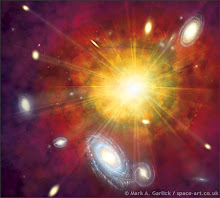In this post, I'm going to introduce to you,one of the most beautiful and spectacular types of computer graphics,'Cel-Shading'.
Cell Shading) is a non-realistic rendering designed to make Computer graphics to be hand-drawn. Rendering is the process of producing virtual computer graphics which are used in gaming,entertainment industries or in stimulations.
The cel-shaded object appears to be an object in cartoons or in comics. By using Cel-Shading, we can draw lovely cartoons on our computer which were used to be hand-drawn before.
The cel-shaded object appears to be an object in cartoons or in comics. By using Cel-Shading, we can draw lovely cartoons on our computer which were used to be hand-drawn before.
Now,Let's understand 'how a cell-shaded object differs from a real one'. But before that, I need you to recollect the paintings which you have drawn in Paint or PowerPoint etc.


Do you remember this window? Yup, It's a window from paint and is used to generate colours which are not available in the colour box. You can form the desired colour by dragging the mouse pointer over or you can enter the values for three fundamental colours,Red,Green and Blue to form a particular shade.Now observe the following drawing:


As you can see, I've drawn bands of various shades of a colour. The numbers indicate the amount of red color present in the shade.
When you see a real-life object you don't see a perticular colour but various shades of that colour.Just as the bands I've drawn above. See the car below:


Cel-shaders are different in nature. In cel-shaded animation, an intermediate colour from a group of close shades is selected and that is used to paint the object. Confused? Observe below...

The colour shade having RED=225 is selected from group 200-255. The colour shade having RED=175 is selected from group 150-200. These two shades are put side by side, eliminating all the other shades in between. See the cel-shaded car.


The bottom section of the car is darkish shade of green.However, the shade changes abruptly as we move from bottom to the top section and it becomes light green.
Property 1: In cel-shading all the shades of a particular colour which are very close to each other are represented by a single colour and used to paint the object. The selected shade is not changed unless and until there's a drastic change in the colour of the object. Drastic change refers to 1. Change of surface 2. Direction of light 3.Completely different colour(say one surface is Red and the other is Blue).
Ok,Let's move to the next point. Observe the following painting. It seems like an ancient tomb. Anyways, It's cel-shaded as you can clearly see. The point to be noted is, all the boundaries of each and every object in the painting are drawn, which you don't see in the real-life object.


Property 2: Thus, In a cell-shaded object all the boundaries are drawn very clearly.
Here are some more cell shaded objects:
 The Grand Cannon-----Teapot
The Grand Cannon-----Teapot
Due to the above properties and some other and it's beauty, Cel-shading is becoming very popular nowadays. It is a relatively recent addition to computer graphics, most commonly turning up in console video games.
The recent Computer/Console games which have used cel-shaders are Prince of Persia 2008, No more heroes etc.




I hope, You would love this powerful and fabulous art of drawing.
-------------------------------------------------------------------------------------------
Want to know more about games? Visit: All about gamez!
Note:Though the end result of cel-shading has a very simplistic feel like that of hand-drawn animation, the process is complex. Softwares like 3ds-max provide ready made cel-shaded textures. Soon, I'll be posting a tutorial on 'how to apply cel-shading to an object'.






1 comments:
Very impressive article. Basics of Cell-shader were explained very nicely.
However, you don't seem to have noted the simple but important points about CellShader,
You have mentioned that Shades of a color closer to each other are replaced by a single color. Pretty much true.
However, it does not mean that Cel-Shader doesn't support the Gradients or Gradient Ramps. It Does. For instance, take a very detailed look at the PoP08's pic that you have put. Take a look at the skin on Prince's hand and you'll know what I mean.
(Point to be noted is Cell-Shader would only support the Gradient if they were part of a texture, And not the part of the Lightings, Radiocity, Luminocity or Global Illumination)
Secondly, Boundaries. You've said that Boundaries are always drawn. Again, true as far as the Cell-Shader's innate logic about Edge Detection goes. Remember that it is creator's choice whether to draw the Boundaries or not. For instance, take a look at the PoP08 Burning Warrior's pic. The Fire SFX is Cell-shaded, but the boundaries are not drawn.
Next time when you post make sure that the screenies would not betray you in such matters. :)
Post a Comment